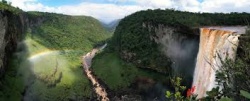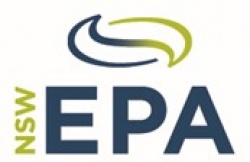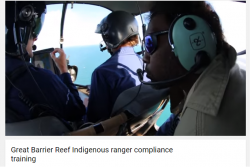
Search archive
AELERT now has members in South America - welcome Guyana EPA
24/10/2016

AELERT is pleased to welcome the Environmental Protection Agency of Guyana as a Member Agency.
The Guyana EPA was established in June 1996 and its mission is to:
Take measures necessary for effective protection and management of the natural environment, coordination of conservation programmes, sustainable use of natural resources, assessment of the impact of development activities on the environment and the integration of appropriate environmental provisions into development planning.
Guyana is a sovereign state situated on the northern mainland of South America with a population of 770, 467 (2016) and an annual GDP of $7,938 per capita.
With 215,000 square kilometres (83,000 sq mi), Guyana is the fourth-smallest country on mainland South America after Uruguay, Suriname, and French Guiana.
More than 80% of Guyana is covered by forests and is home to approximately eight thousand species of plants, half of which are found nowhere else including some of the world’s rarest orchids.
The country also has one of the highest levels of biodiversity in the world. The Guiana Shield region is little known and extremely rich biologically, and unlike other areas of South America, over 70% of the natural habitat remains pristine.
The Guyana EP Act mandates the EPA to oversee the effective management, conservation, protection and improvement of the environment, the prevention and control of pollution, the assessment of the impact of economic development on the environment and the sustainable use of natural resources.
In working towards achieving its mandate, the EPA enables Guyana to contribute to global environmental protection and conservation. To that end the Agency implements education, facilitating, compliance and enforcement programmes and uses partnership and collaborative approaches to strengthen the impact of its interventions.
Guyana’s EPA Director Compliance and Enforcement, Kemraj Parsram, said “Membership in the AELERT Network will strengthen international collaboration and partnership in sharing experiences, and building knowledge and capacity for sustainable development and environmental protection and conservation in Guyana.”
NSW council officers invited to EPA vapour recovery workshop
24/10/2016

The NSW Environment Protection Authority (EPA) invites local council environment and planning officers to attend one of four workshops held this November and December to learn about vapour recovery compliance at local service stations, before they become responsible for it early next year.
Petrol vapours from service stations are one of the biggest contributors to poor air quality in NSW. Vapour recovery technology aims to reduce local air pollution by capturing petrol vapours before they enter the atmosphere.
Since 2010 the EPA has been regulating the progressive upgrade of service stations from Port Stephens to Wollongong and west to the Blue Mountains with vapour recovery technology. From 31 January 2017 vapour recovery requirements will be incorporated into the existing regulatory responsibilities of local council officers for service stations in their local area.
To help make this transition of vapour recovery responsibility as smooth as possible, the EPA has organised a series of workshops in consultation with Local Government NSW.
The workshops will be located in Sydney, Newcastle, Wollongong and Parramatta have been designed to give council officers practical information, and guidance about vapour recovery technology and compliance, along with a range of tools to assist in undertaking vapour recovery assessments. Planning officers will benefit from understanding the vapour recovery requirements to be included in development consents for new or modified service stations.
As this compliance role is new for many environment officers, the EPA will also maintain its vapour recovery team until 30 June 2017 who will be available to provide advice and assistance to councils as required.
Registration is limited to two council officers per council and required by close COB Friday 11 November 2016. The EPA may undertake additional workshops based on demand.
For more information about the workshops and to reserve your place please register at http://www.epa.nsw.gov.au/air/petrolvapour.htm.
You can also contact Anne Kubiak on (02) 9995 5920 or anne.kubiak@epa.nsw.gov.au
Great Barrier Reef Indigenous ranger compliance training
12/10/2016

The Commonwealth and Queensland governments recently released the first Reef 2050 Plan annual report demonstrating the progress that has been made towards protecting the Great Barrier Reef.
The Reef 2050 Plan is a collective strategy for protecting the reef for future generations. Its success to date is a testament to the collaboration of Traditional Owners, community members, scientists and industry leaders working to deliver meaningful action.
It illustrates for UNESCO's World Heritage Committee Australia’s staunch commitment to conserving this incredible natural asset.
Since the plan was released in March 2015, 29 of the plan’s 151 actions have been completed and a further 102 are on track as of 30 June 2016.
23 actions specifically relate to programs involving Traditional Owners.
In late 2015, the Indigenous Reef Advisory Committee recommended that a Reef 2050 Indigenous Implementation Plan be developed by Gidarjil Development Corporation, to consider the delivery of these actions.
In early 2016, Gidarjil undertook consultation to seek the view of Traditional Owner groups in the Great Barrier Reef. This consultation informed the development of the Reef 2050 Indigenous Implementation Plan which proposes pathways for implementing the Traditional Owner specific Reef 2050 Plan actions as a group.
As part of the plan The Great Barrier Reef Marine Park Authority (GBRMPA) is delivering contextualised compliance training to 28 Indigenous Rangers to improve their skills to report non-compliance and have an active role in enforcing their lore and the rules of the Marine Park Acts.
The nationally recognised Certificate IV in Government (Statutory Compliance) course was developed by GBRMPA and was delivered as a major component of the Specialised Indigenous Ranger Programme, which is funded under the Commonwealth government’s Dugong and Turtle Protection Plan.
This training is the first of its kind and was specifically developed to meet the needs of Indigenous Rangers working within their community and sometimes in remote and isolated areas.
The GBRMPA Indigenous Compliance team is working closely with the Rangers to complete on-the-job milestones and facilitate their involvement in compliance related activities within the Marine Park.
The Rangers will receive a nationally accredited and transferable qualification and the confidence to apply skills within any regulatory framework.
Take a look at these Rangers undergoing their training at the Yuku Baja Muliku Ranger Base south of Cooktown.

